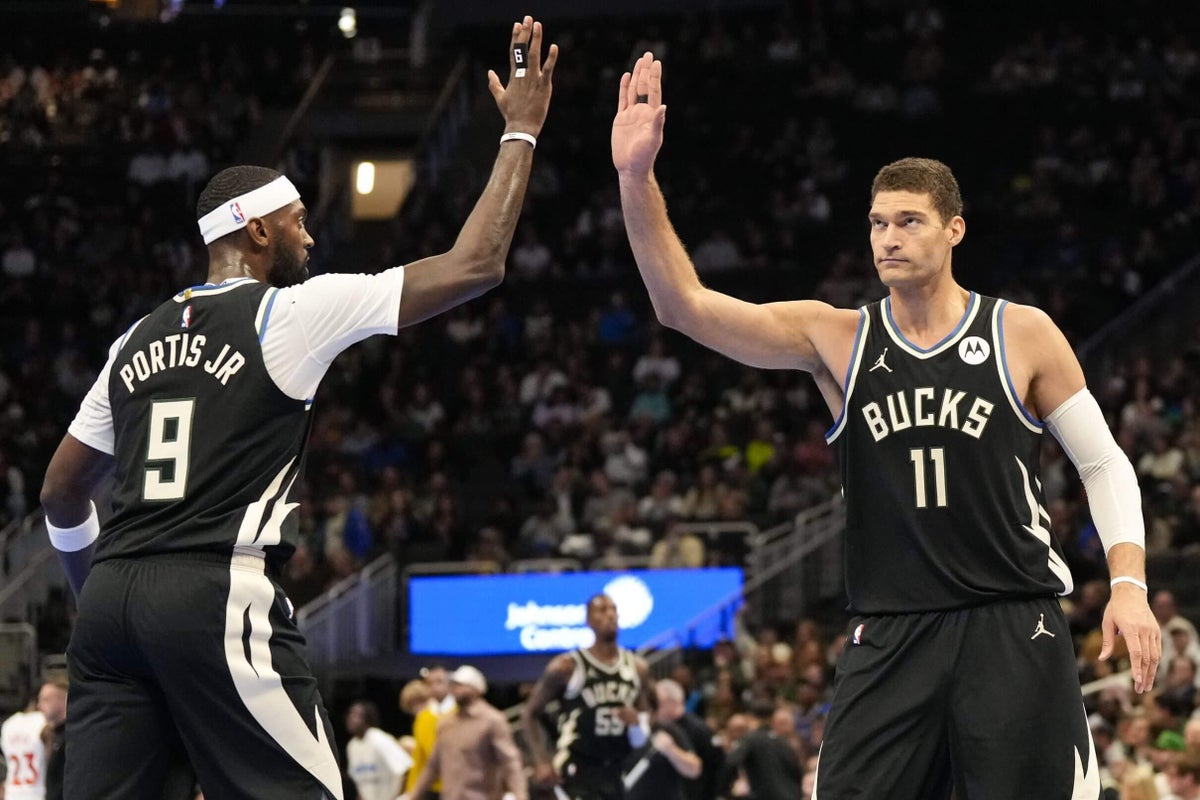The Milwaukee Bucks enter the NBA free agency period with a mix of challenges and opportunities. Fresh off retaining Bobby Portis, General Manager Jon Horst faces the task of constructing a competitive roster around Giannis Antetokounmpo, despite limited financial flexibility. The aftermath of Damian Lillard’s injury casts a shadow over the team’s immediate future, making strategic decisions in free agency even more critical.
With several key players entering free agency, including Brook Lopez and Gary Trent Jr., the Bucks must navigate the complexities of the salary cap while aiming to bolster their roster for a deep playoff run. This article will delve into Milwaukee’s current salary cap situation, explore potential free agency scenarios, and highlight possible targets to complement Giannis’s skillset and maintain the Bucks’ competitive edge in the Eastern Conference.
Heading into free agency, the Bucks have six players with guaranteed contracts for the 2025-26 season: Giannis Antetokounmpo, Damian Lillard, Kyle Kuzma, Bobby Portis, Pat Connaughton, and Tyler Smith. Their combined salaries already exceed the projected $154.6 million salary cap.
On top of those guaranteed salaries, the Bucks also have three players with non-guaranteed contracts: AJ Green, Andre Jackson Jr., and Chris Livingston. These non-guaranteed salaries add some flexibility at the start of the offseason. The decision on whether to roster Bogi Marković this season also impacts their cap sheet, potentially adding a minimum salary.
Adding these salaries brings the Bucks’ cap sheet close to $161.9 million, roughly $26 million from the projected luxury tax line and $34 million from the projected first apron line. Unlikely bonuses in Kuzma’s contract count toward calculations under an apron but not under the tax, affecting their spending power.
Having moved under the second apron at the trade deadline, the Bucks have a full set of salary cap exceptions. However, using the non-taxpayer midlevel exception ($14.1 million) would hard-cap them at the first apron. The team may also want to avoid the luxury tax, further limiting their spending power.
Retaining their own free agents is a priority. While they own Bird rights for Portis and Lopez, allowing them to offer maximum salaries, the same isn’t true for Trent. Retaining Trent would require either a 120 percent raise off his minimum contract or using an exception. The market for Trent and Kevin Porter Jr. could influence the Bucks’ decisions.
The situation with Brook Lopez is also crucial. After returning to the Bucks with a two-year, $48 million deal in 2023, he’s now a free agent at 37. Despite continued interest, his salary demands will likely be lower. If the Bucks don’t retain Lopez, they could use the bi-annual exception or trade exception to acquire a player.
The Bucks could target several players using different portions of the non-taxpayer midlevel exception.
Nickeil Alexander-Walker (Full Non-Taxpayer Midlevel Exception): The Timberwolves might push Alexander-Walker out the door. A strong defender and shooter, he could be a valuable addition to the Bucks.
Luke Kennard (Most of Non-Taxpayer Midlevel Exception): If the Bucks can’t bring back Trent, Kennard could be an option. He is a career 43.8 percent 3-point shooter.
Nicolas Batum (Part of Non-Taxpayer Midlevel Exception): The veteran forward declined his player option with the Clippers. He could provide a strong veteran presence and versatile defense.
The Bucks could fill roster spots with veteran minimum contracts.
Amir Coffey: A 6-foot-7 wing who shot 40.9 percent from 3-point range.
Al Horford: Playing for a good team will likely be part of his expectations.
Thomas Bryant: He could be an interesting option as a backup big in Milwaukee.
The Bucks face several strategic choices in free agency. They must decide whether to prioritize retaining their own free agents like Trent and Lopez or pursue external options using the midlevel exception. The decision to avoid the luxury tax could further constrain their options. The Bucks must weigh short-term competitiveness against long-term financial stability.
Given Damian Lillard’s injury, the Bucks must ensure they have enough depth and talent to remain competitive in the Eastern Conference. This may involve taking risks on younger players with potential or relying on proven veterans to fill specific roles. Ultimately, the Bucks’ success in free agency will depend on their ability to make shrewd decisions that maximize their limited resources.
The Milwaukee Bucks’ offseason hinges on critical free agency decisions. After retaining Bobby Portis, the focus shifts to addressing key roster needs while navigating salary cap constraints and luxury tax considerations. The team’s approach to retaining players like Brook Lopez and Gary Trent Jr., coupled with their use of available exceptions, will define their competitiveness next season.
Securing talent around Giannis Antetokounmpo remains paramount. Whether through re-signing familiar faces or exploring new additions like Nickeil Alexander-Walker or Luke Kennard, the Bucks must optimize their roster to contend in the Eastern Conference. The coming weeks will reveal whether Milwaukee can strike the right balance between short-term gains and long-term sustainability.

Leave a Reply